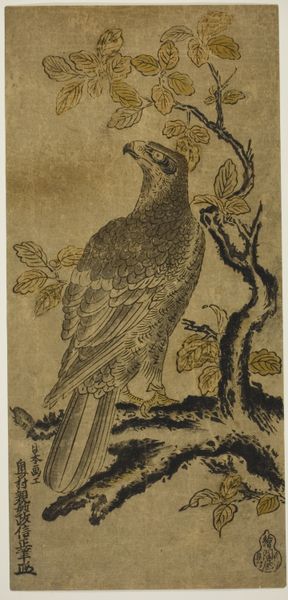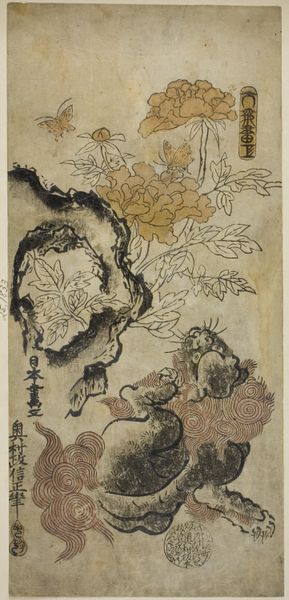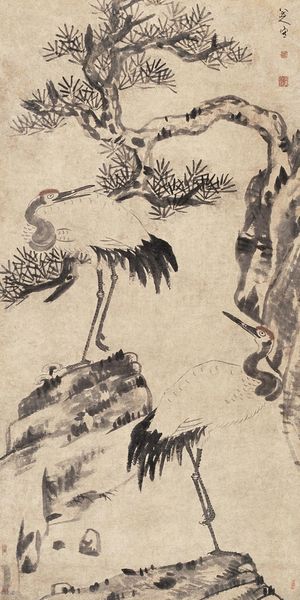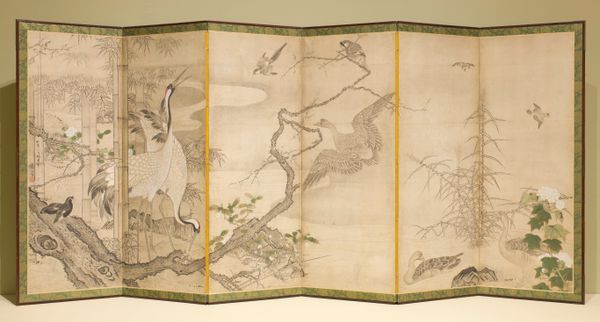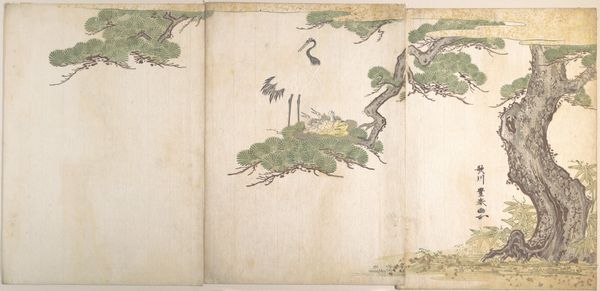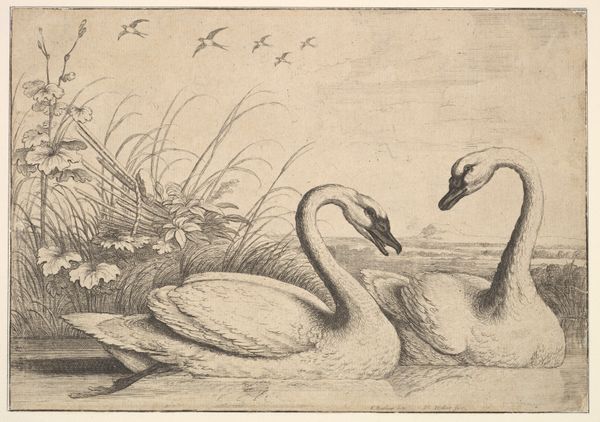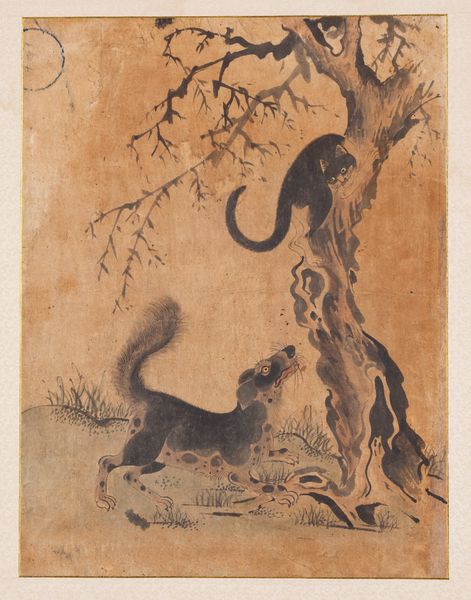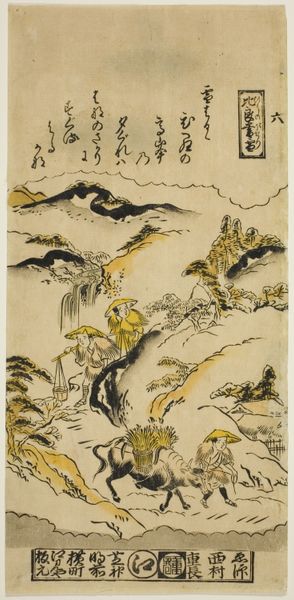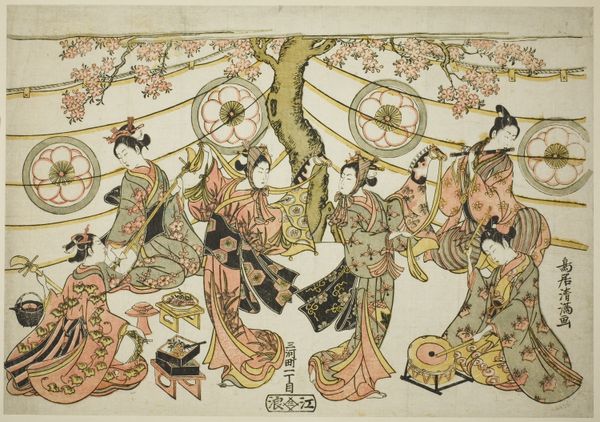
print, ink
#
ink drawing
# print
#
asian-art
#
landscape
#
ukiyo-e
#
figuration
#
ink
Dimensions: 9 5/8 x 13 in. (24.4 x 33 cm)
Copyright: Public Domain
Curator: Up next we have "Pheasants," an ink drawing by Hishikawa Moronobu, dating sometime between 1615 and 1868. It’s currently part of the collection here at the Metropolitan Museum of Art. Editor: This piece feels both delicate and strikingly graphic. The textures Moronobu achieves with just ink are remarkable. Curator: Absolutely. What interests me is how these prints circulated. Ukiyo-e, these “pictures of the floating world,” became accessible to a wider audience than traditional painting, reshaping the artistic landscape and, indeed, creating a consumer market. Editor: Considering the materiality, it’s clear the labor involved in carving those woodblocks, especially to achieve this level of detail, must have been intense. We see a flattened perspective, simplified forms. Curator: It is also about the socio-political backdrop. This imagery really captures a specific cultural moment, with the rise of urban culture in Edo, as Tokyo was formerly known. Commoners gained more economic power, leading to demand for art that mirrored their lives and aspirations, like theatre scenes and beautiful courtesans, but also natural subjects. Editor: And that gets to a point: the role of this pheasant. It’s clearly posed. The composition feels intentional for how the plumage is rendered. There is such an emphasis on texture via process. Is there any reading of a specific commentary regarding naturalism versus the social construct? Curator: The depiction of nature reflects the prevailing philosophies and values. The pheasants themselves were associated with bravery and good fortune, appealing to merchant patrons wanting to associate with those values, particularly those newly ascending into societal ranks. Editor: And yet, these prints served a specific, maybe subversive social function? How radical of a process were such mass distributions of imagery in its period? Curator: A lot. Ukiyo-e challenged the elitism of traditional art, as we can see, democratizing visual culture through relatively inexpensive prints. Editor: Well, considering the materials used and the social forces in play, it shifts how we define this. It seems, perhaps, we tend to oversimplify the intentions and means in their production. Curator: A crucial reminder that understanding an artwork's production and circulation offers deeper insights.
Comments
No comments
Be the first to comment and join the conversation on the ultimate creative platform.

